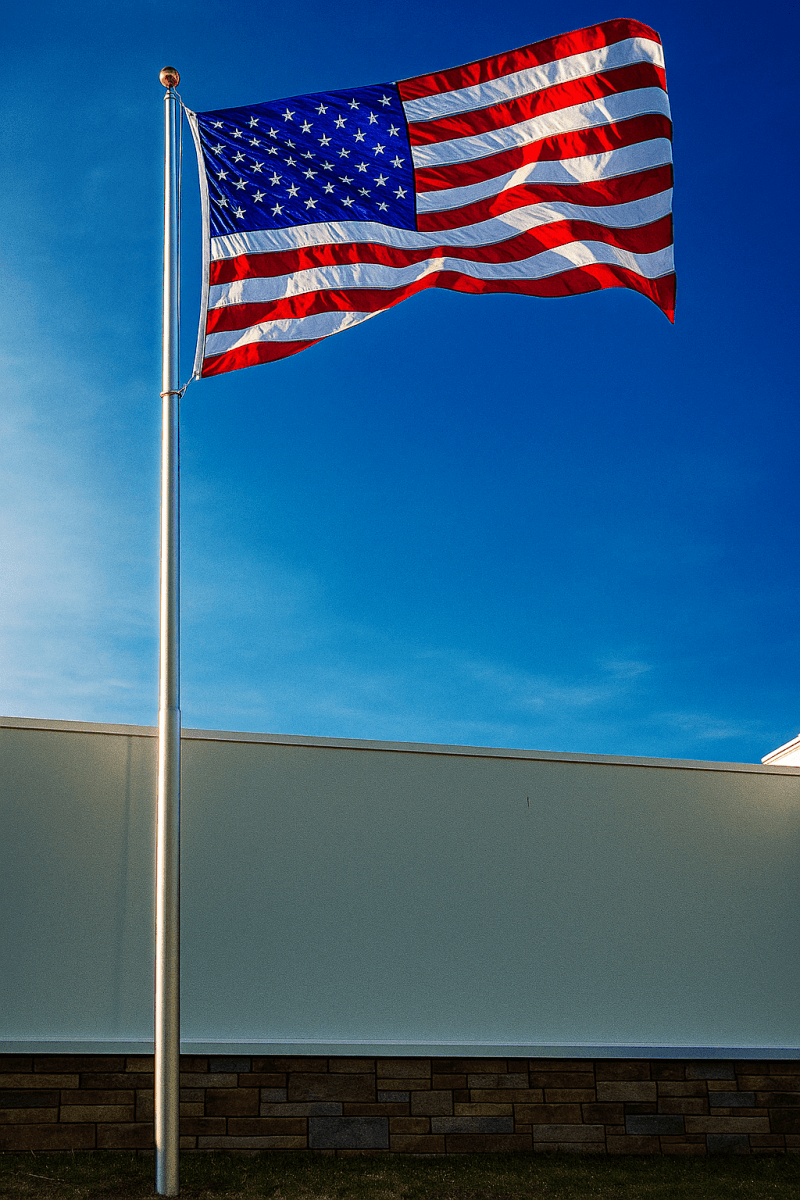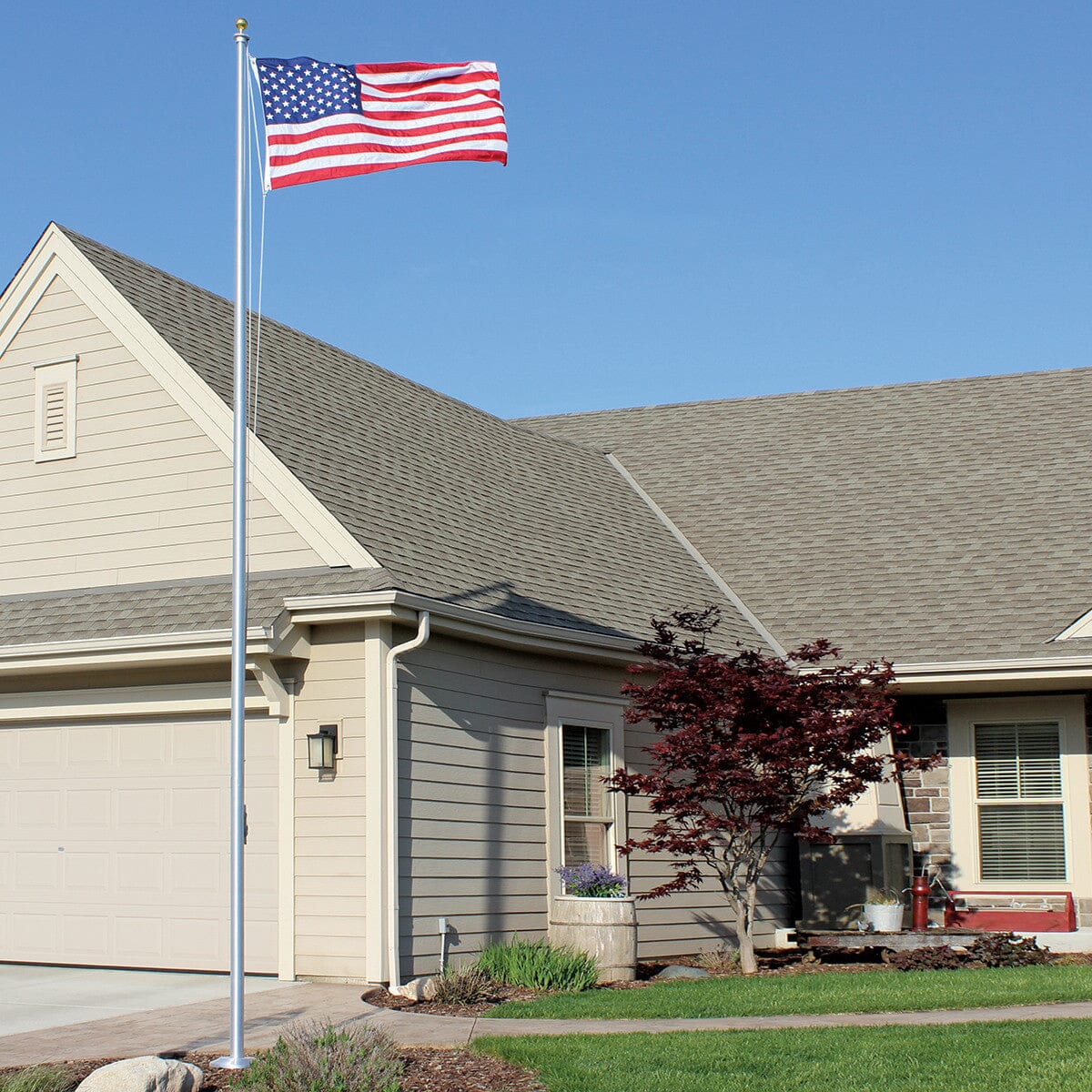Taking care of your flagpole demonstrates the same respect you show when raising your flag with pride. Telescoping flagpoles offer incredible versatility for homeowners and business owners who need portable, easy-to-set-up displays.
However, many people don’t fully understand the importance of safe storage and transportation. Your investment deserves protection, and understanding how to properly store and transport a telescoping flagpole directly impacts its longevity and performance. Simple mistakes during storage or transport can lead to damage, becoming a source of frustration.
Why Proper Storage and Transport Matter
Whether you’re a veteran honoring your service, a business owner showing pride, or a homeowner celebrating national holidays, your flag represents something meaningful. Veterans and service members know that respecting the US flag includes caring for the equipment that displays it.
Improper care causes damage and shortens the lifespan of the flagpole. When you’ve invested in quality, protecting it is essential to preserve both function and symbolic value. Neglecting storage and transport creates predictable issues. Aluminum and steel poles can dent or bend under impact or pressure. Dirt and moisture in telescoping sections cause corrosion, making them hard—or impossible—to extend or retract.
Preparing Your Telescoping Flagpole for Storage
Complete a Retraction and Mechanism Check
Always collapse your flagpole completely before beginning storage preparation in order to prevent damage to individual sections. Disengage all locking mechanisms during retraction to avoid applying unnecessary pressure that could damage internal components. Check each telescoping section as you collapse the pole. Sticking or grinding suggests the need for cleaning or lubrication before storage.
Clean the Flagpole
Clean your flagpole with a soft cloth, using mild soap and water when you come across stubborn grime. Harsh chemicals or abrasive materials can scratch protective coatings and damage the pole’s surface. Pay special attention to telescoping joints where dirt and debris commonly accumulate. After cleaning, dry the flagpole thoroughly. Moisture trapped in storage creates ideal conditions for corrosion, particularly in aluminum poles.
Inspect and Organize Components
Examine each section for cracks, dents, or mechanical issues. Store attachments separately to prevent damage and tangling. Small parts, such as caps, pins, and mounting hardware, could disappear easily, so store them in labeled containers or bags.
Document damage or wear you discover during inspection. This information helps you plan repairs or order replacement parts before taking the flagpole out of storage.

Storage Tips for Long-Term Durability
Optimal Storage Environments
Indoor storage provides the best protection for your flagpole. Garages, sheds, and storage rooms offer controlled environments that protect against extreme weather. Avoid areas with high humidity, extreme temperatures, or direct sunlight that can cause material degradation. Basements might seem convenient, but these spaces can accelerate corrosion. Choose dry, well-ventilated spaces whenever possible.
Protective Storage Equipment
Invest in a padded storage bag or case designed for flagpoles. These protective covers prevent impacts and scratches during storage. PVC pipes or custom containers work well for budget-conscious storage solutions, providing rigid protection against accidental damage.
Label storage containers clearly, especially if you own multiple flagpole systems. This simple step saves time and prevents confusion when you need to locate equipment.
Seasonal Storage Considerations
Winter storage requires extra attention to moisture control. Ensure no water is trapped in telescoping sections before storing. Ice formation can damage internal mechanisms and create expansion pressure that deforms pole sections.
In the summer, avoid storing your flagpole in direct sun, as it can fade colored finishes or warp certain materials. Even covered storage areas can become extremely hot, so choose the coolest available location.
Transporting Your Telescoping Flagpole Safely
Whether you’re heading to a patriotic event, campsite, or parade, secure transport ensures your flagpole arrives in top condition and ready to raise a flag.
Vehicle Selection and Preparation
SUVs, trucks, and cars with folding seats accommodate most telescoping flagpoles when collapsed. Measure your collapsed pole length, and compare it to your vehicle’s cargo area before transport. Interior transport provides better protection than exterior mounting, but roof racks work well, too. For instance, you might have to put the flagpole in a roof rack with padding and secure strapping systems if the pole is too long for the cabin. Use high-quality tie-down straps, and inspect them regularly for wear or damage.
Secure Packing Methods
Always transport your flagpole fully collapsed and secured against movement. Hard surfaces in vehicle cargo areas can dent or scratch unprotected poles. Wrap the pole in blankets, or place it in a padded case to prevent impact damage during transit.
Bungee cords and cargo straps prevent rolling or sliding during transport. Position the pole so it cannot touch other cargo or vehicle surfaces during acceleration, braking, or turning.
Travel-Specific Considerations
Air travel with flagpoles requires advance planning and airline policy research. Size restrictions vary between carriers, and hard cases for the pole provide protection during baggage handling.
If you’re taking road trips and camping adventures, consider storage that allows quick setup. Keep your telescoping flagpole kit accessible without unpacking other gear.
Professional Tips and Common Mistakes
Even experienced flagpole owners can learn new tips! Add silica gel packets to storage bags to absorb moisture, and use color-coded tape to quickly identify parts during setup. Monthly inspections enable you to catch small issues before they worsen.
Avoid storing flagpoles when they’re wet—trapped moisture causes corrosion and damages telescoping sections. Don’t toss poles into truck beds unprotected; impact can cause dents and bending. Also, secure poles during transport without over-tightening, which can deform components.

When To Replace or Upgrade Components
Sticking telescoping sections indicate wear or damage that may require replacement. Rusted locking mechanisms compromise security and operation. Bent or deformed pole segments affect both appearance and function. Sometimes, replacement becomes more cost-effective than repair, particularly for old telescoping flagpoles.
Protecting Your Investment
Understanding how to properly store and transport a telescoping flagpole ensures your equipment serves you reliably for a long time. Taking pride in your flag means taking care of the equipment that displays it.
Review your current storage and transport methods against these recommendations. Simple improvements in handling procedures protect your investment and maintain the symbolic value your flagpole represents. If you’re unsure about setup or need help with the installation, Liberty Flagpoles also offers professional installation services to make the process smooth and stress-free.







